Leave No Trace strictures vs Vandalism: There is a better way. I have been involved in land management for nearly seventy years and have planted thousands of trees, even this year when I am laid up with this ‘broken’ back. Surely most who read this have also thrilled to depictions of just the opposite, such as: ‘My Side of the Mountain’, Swiss Family Robinson’, ‘Hatchet’, etc. It is strange that this view has become so prevalent at just this time that forests everywhere are expanding, adding an area twice the size of Australia in just the last 30 years for example.
(NB: I have been moved to re-post this in the light of the monstrously destructive bushfires we are having in Australia which are a testament to the failure of the greenies’ land (mis)management lunacy. I would like to see all National Parks abolished and replaced once more with state forests managed to ensure a diversity of activities and access as well as improving the continuance of the variety of life which used to inhabit them. So much better than watching them periodically razed to the ground with every life form in them utterly destroyed.)
I view this (mainly urban) ‘philosophy’ (‘Leave No Trace’) as yet another example of green extremism and of statist efforts to further alienate public land from the people. Prior to some time in the C12th ‘the public’ owned the ‘public land’ where they had pretty much unfettered rights to roam, hunt, collect (firewood, food, flowers, materials, gemstones, etc), shelter, live and generally enjoy its amenity.
The Crown Land Act basically appropriated all the public land to the King (John), and the public were ever after forbidden its every use on pain of death (so this was a big change, back then) – then Robin Hood and his ‘merry men’ (who lived there) became ‘criminals’ and could be hanged for ‘taking’ one of the ‘King’s deer’ for example – as in the old Television show (below) available to download free on the Internet Archive. (They are gold!) I would like to see the Crown Land Law Act repealed everywhere – and the land returned to the people.

After the settlement of the various British colonies (Australia, New Zealand America, etc) the ‘Crown Land’ became the (State) Government’s land onto which the public might only venture under specified circumstances. Mainly (eg in Victoria) the majority of this ‘unalienated’ ‘crown land’ was in the form of ‘state forests’ (some crown land was leased to private landowners on 100 year leases – we have had many such blocks over the years). The public pretty much enjoyed the ‘freedom’ of the state forests until quite recently. Many other activities could be enjoyed there under liberal licence terms (forestry, grazing, mining. firewood collection, fishing etc).
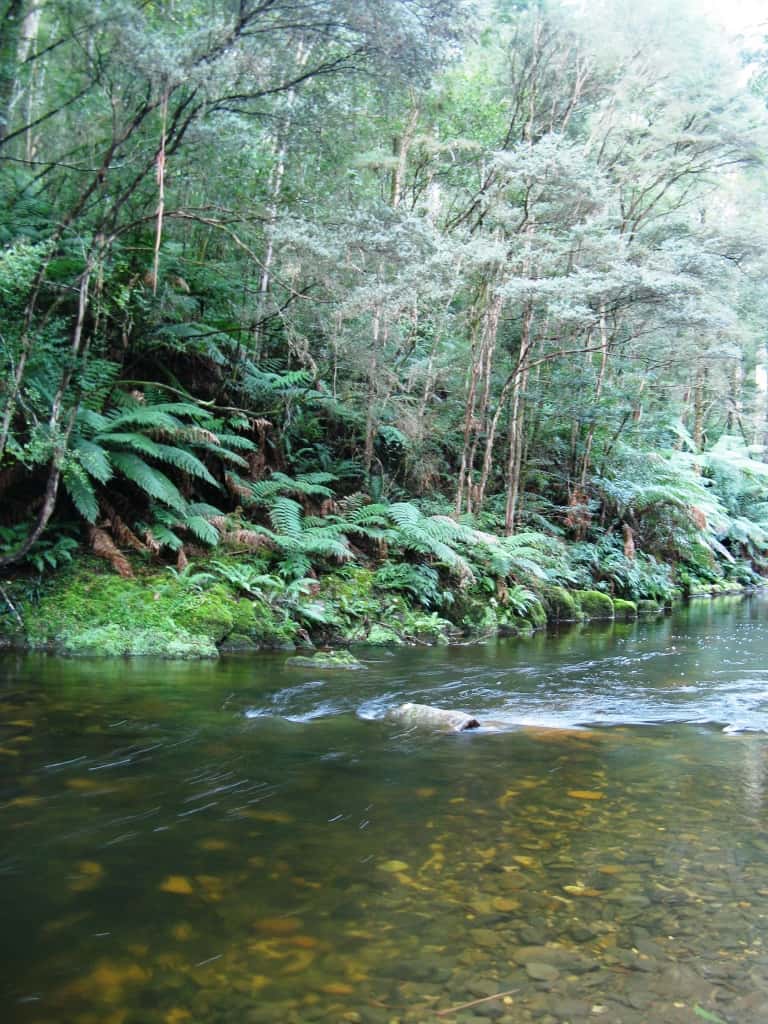
Otherwise you could pretty much walk, camp, hunt, light a campfire etc almost anywhere within the state forests which were nonetheless preserved in perpetuity for public use as crown land and forest. The Government retained the right to make special rules as circumstances required, so that some such activities could be circumscribed in specially ‘sensitive’ areas or areas with heavy use, (or times, etc) – and were. For example, there were duck ‘seasons’ and rules on taking fish, crayfish, deer, native animals, wildflowers etc – so that the resource could be preserved for future generations. This system of management preserved all the creatures and flora we still enjoy today for over 100 years – I would argue much better than the present ‘system’ of ‘conservation’.
 Then came ‘National Parks’, ‘State Parks’, ‘Reference Areas’ and other such alienations of the public lands from the public. Interestingly these things came simultaneously as fewer and fewer people lived , worked in or used these wild areas. I suppose ‘everyone knows’ that Wilsons Prom was ‘pretty much’ the first ‘National Park’ declared anywhere in the world. Probably the majority of citizens of Victoria know how onerous the rules and regulations there are – though some no doubt help preserve ‘delicate’ areas from too much human traffic. In very busy areas more rules and regulations no doubt are needed – whether the area be ‘National Park’ or ‘State Forest’.
Then came ‘National Parks’, ‘State Parks’, ‘Reference Areas’ and other such alienations of the public lands from the public. Interestingly these things came simultaneously as fewer and fewer people lived , worked in or used these wild areas. I suppose ‘everyone knows’ that Wilsons Prom was ‘pretty much’ the first ‘National Park’ declared anywhere in the world. Probably the majority of citizens of Victoria know how onerous the rules and regulations there are – though some no doubt help preserve ‘delicate’ areas from too much human traffic. In very busy areas more rules and regulations no doubt are needed – whether the area be ‘National Park’ or ‘State Forest’.
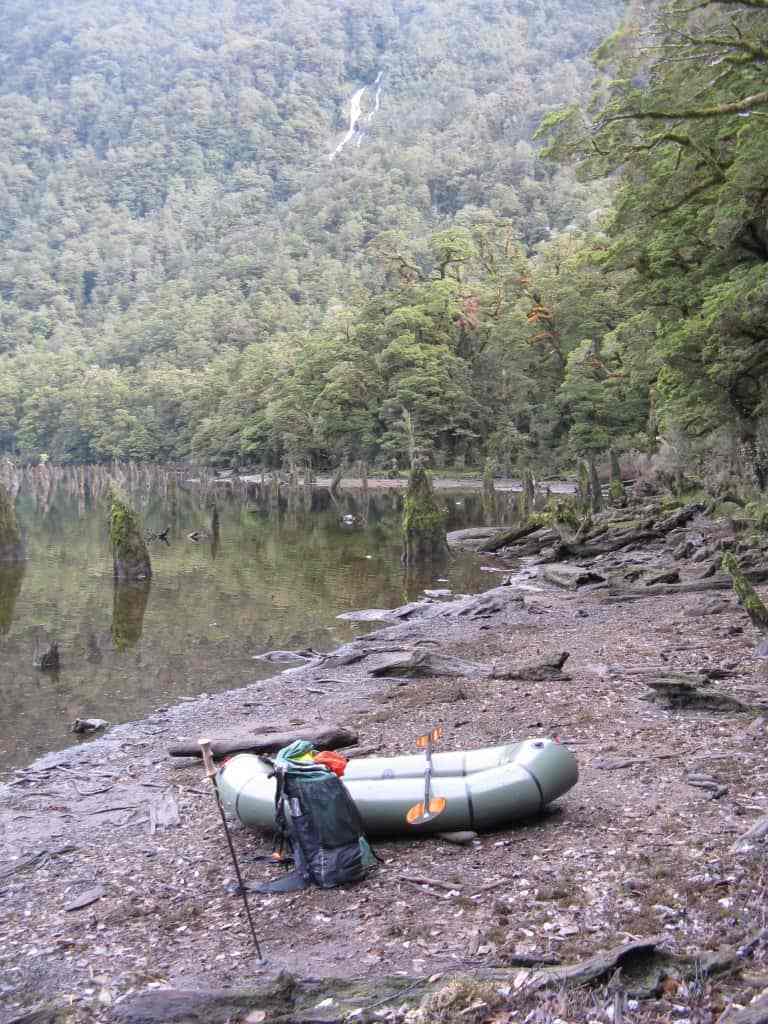
There remain vast areas of the Park though which one might well want to venture (off-track) but may not, and which it is hard to see how the solitary hiker would/could cause much disturbance by wanting just to see them. One might well want to walk along the beach (for example) from the public access at Shallow Inlet to the Darby River (where there is also access), or along Corner Inlet from Miller’s Landing to Foster. Many more remote possibilities are obvious, but excluded by bureaucracy.
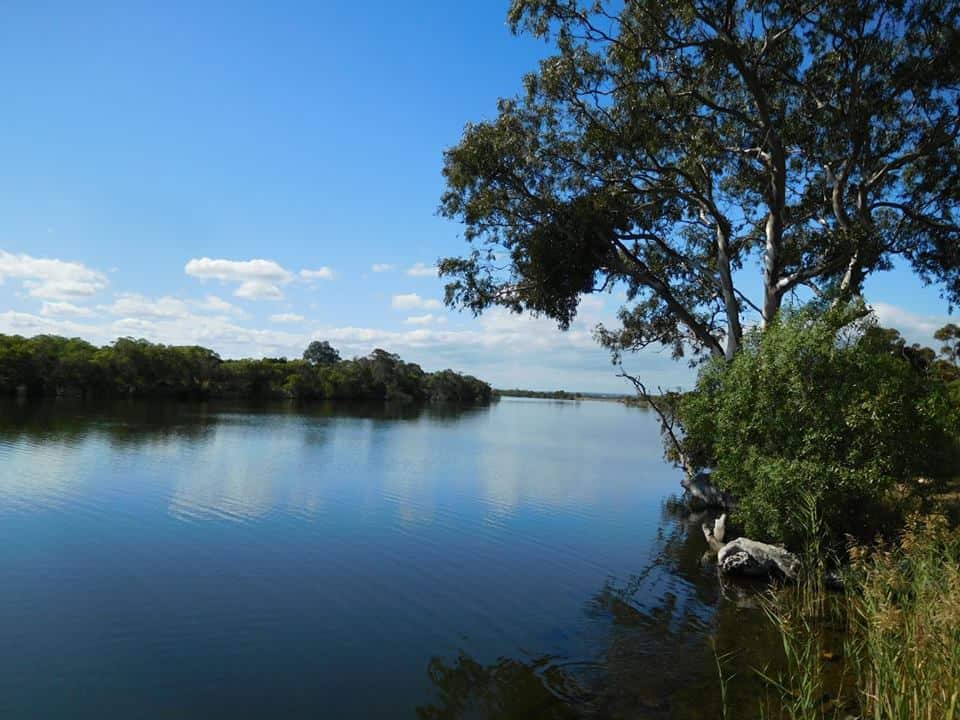
Most other ‘National Parks’ are more remote and much less ‘busy’ so that it defies all reason why they need to be ‘National Parks’ – or have any rules at all. However in the vast ‘Alpine National Park’ for example, it is illegal to walk off-track anywhere (unless you are a deer hunter) – or to camp anywhere other than at ‘designated camp sites’ (few enough of them anyway). Some places there are ‘designated walking tracks’ it would be impossible to traverse in a single day but without ‘designated camp sites’ – so that it is both ‘permitted’ to venture there, but ‘illegal’ at the same time!
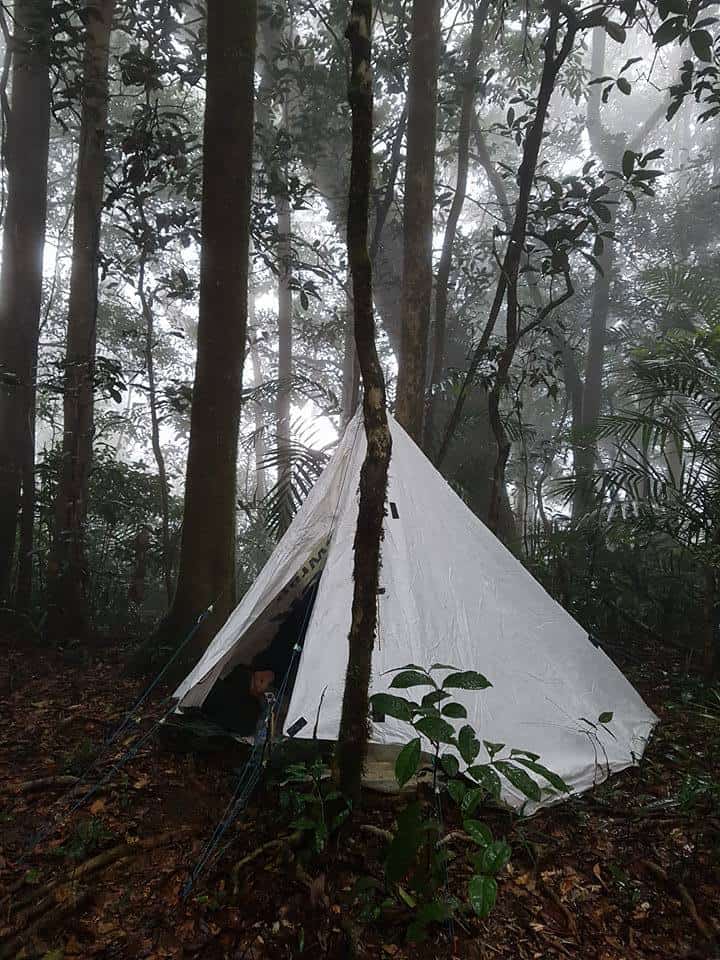
There appears to be pretty much zero maintenance of tracks both walking and vehicular by the tens of thousands of state employees of those government bodies responsible for the State Forests, National Parks etc. Deer hunters, 4WDers, fishers and loggers appear to do the lion’s share of any work carried out. Instead every year more and more tracks and roads are closed to public access (or even all access – including so-called ‘Management’ – hundreds of kilometers pretty much every single year). It is clear what the intention of all these track closures is: the total alienation of the public lands from the public whose (future) enjoyment was the intention of their ‘preservation’.

This has been happening ‘progressively’ since the 1970s. The amalgamation of the Forestry and Land Depts into various new super Depts with ever-changing fancy names only heralded the take-over of these Depts by green activists particularly since the 1980s. The focus of all ‘management’ has shifted from managing the actual land for which they are responsible to managing meetings, the office and the 4WD vehicles with road tyres they use to go from one meeting to another – and of course to the creation of more and more rules to micro-manage or further restrict public access to ‘their’ lands. As an example, the spread of sambar deer was clearly explained and identified by Max Downes as early as 1980 (before he and anyone else who did not suit the new ‘green’ philosophy was squeezed out).

The need to manage that spread by increasing hunting opportunities was clear, yet track access has been closed to vast areas (making any management of anything at all impossible) access to huge areas for hunting remained forbidden. Now that the deer have increased very substantially (mostly due to poorly controlled wildfires that their lack of management basically caused), the deer are so numerous in places they are now being shot from helicopters (and wasted) rather than being the premium hunting opportunity for recreational hunters that they ought to be, yet there remain large swathes of country hunters still may not go (or be able to go – due to track closures). Hunters, hikers, campers etc are adjured to ‘leave no trace’ yet even if they acted like the worst yobbos and vandals you have ever encountered in the bush they would do much less damage than the new ‘green’ management has resulted in – with millions of hectares ruined for decades by out-of-control wildfires (in the absence of any policy of regular fuel reduction, for example – or just the ability to drive on tracks which no longer exist to where the fires started).
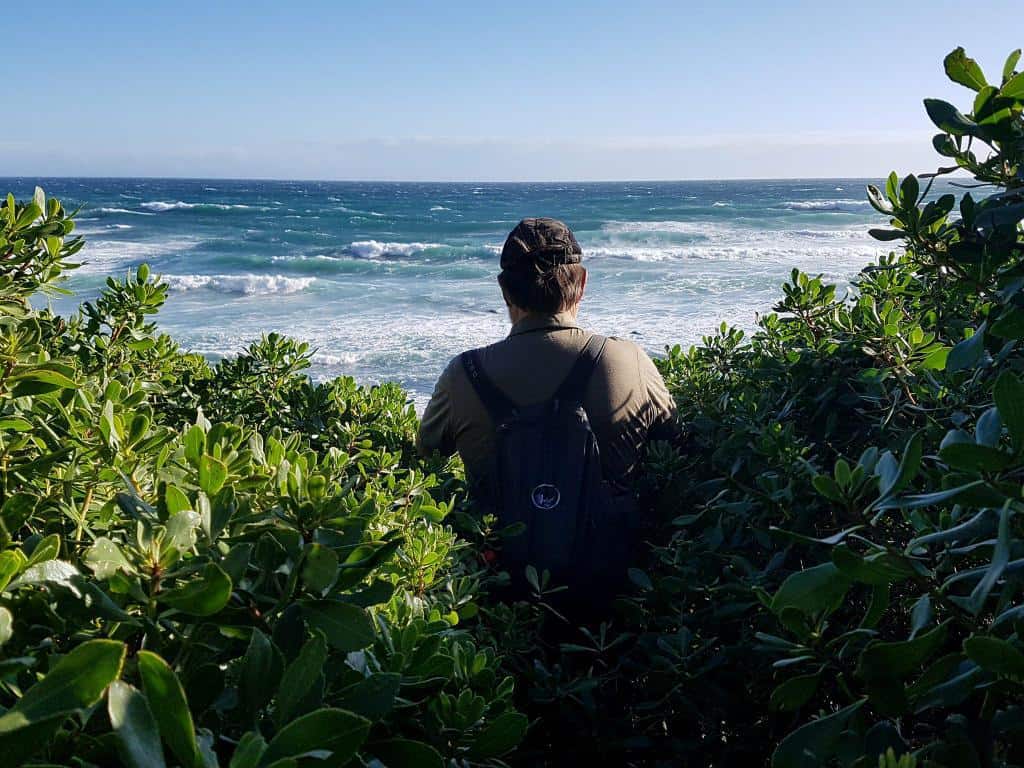
Any ‘philosophy’ which aids this rabid theft of public land (by the bureaucracy) is reprehensible. Rather than ‘leave no trace’ I think it is the public’s responsibility (as they use the public land) to make improvements to it for future users. Clearing and maintaining vehicular and walking tracks, (including re-opening closed tracks) building and maintaining huts and campsites is an obvious place to start. At the moment it is actually illegal to ‘cut or lop’ any native vegetation without a permit – so that when a tree or plant encroaches on a track or falls over a road you may not cut it with your machete, pruning saw, axe, or chainsaw so that you can continue on your way. You are obliged by law to ‘leave no trace’. This is a ridiculous situation – and is sensibly disobeyed by most users.

At the same time the so-called ‘managers’ of these areas totally neglect them so that they are over-run by pest animals such as foxes, rabbits and cats and weeds such as the thousands of acres of blackberries in the Alpine National Park. There is zero fire prevention or fire break maintenance – indeed there are no firebreaks or even fire access roads. They have all been closed – so that episodically the whole vast area is swept ‘clean’ by shocking disastrous bushfires which far from leaving no trace, erase all life within them. Yet this is what the Green extremists and the bureaucrats who have stolen the land from the public seem to want – so long as the public can be totally excluded from those areas!

It seems perfectly reasonable to me help keep any tracks or roads clear, fill any vehicular holes with stones, to whipper-snip the grass in a camping area, (tidy up any rubbish vandals have left behind), and improve the amenity of the site generally eg by keeping a (non-designated) walking track to the river/stream clear, spraying any invasive weeds which have grown up nearby, throwing the cursed rings of stones back into the river and so on. None of these sensible activities would be allowed under the green extremist, ‘Leave No Trace’ ‘philosophy’. It is just another deplorable ‘religious’ mantra – and should be avoided, like all the others!

The human interface between ‘man’ and nature starts as soon as we open our eyes wherever we are, and every interaction leaves a ‘trace’ – on both parts. In suburbia we have the swallows nesting under our verandahs or in our garages who ‘paint’ interesting designs down our walls and on our cars. Some folks are so annoyed by this they knock the swallows’ nests down or even attempt to kill them eg with tennis rackets. I know I had a friend who acted so. Bad karma got him in the end and he died young! So beware! Myself, I love the swallows and eagerly await their return. If they are a day late (around 20th August here) I start to worry that someone in their other home (I guess in North Asia somewhere) has harmed them – but they must have nice human friends there too, as they return every year and help clear the air of mosquitoes over Spring and Summer. (PS: Ominously this year only two of a flock of more than 20 have returned. These two have expanded (in two clutches so far) to 7-8, so there is hope yet!)
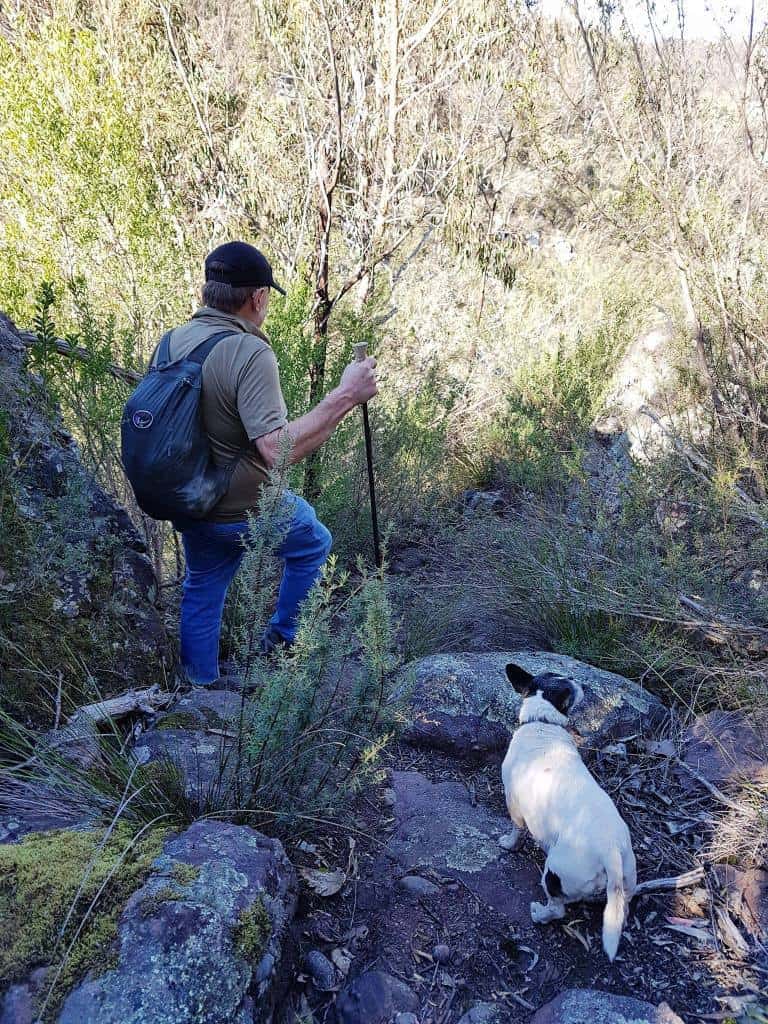
Most folks have a small (or large) garden I suppose (or wish for one) where they can plant a beautiful tree (or a thousand – as we do) and watch with delight as insects, birds and other creatures visit their garden. Many have ponds for frogs and other creatures to enjoy (we have several dams), and also bird feeders so the local inhabitants can stave off seasonal scarcity and fill the air with wonderful birdsong. In helping construct the natural environment which begins right outside their bedroom window (as ours does), they are doing just the reverse of ‘Leave No Trace’ – and doing so quite properly. May all gardeners prosper – and the world become one vast garden which we share with every living thing!

The dams that beavers build, the bowers of birds and the termites’ mounds are all works of nature – just as our houses and gardens are. The line between ourselves and nature is not clear and stark but very blurry – as it should be. Nature is enormously resilient. We must all have seen photographs of ruined cities such as Ankor and Macchu and wondered at the way nature is ‘reclaiming them’ – or just melding with them, as it ever does.
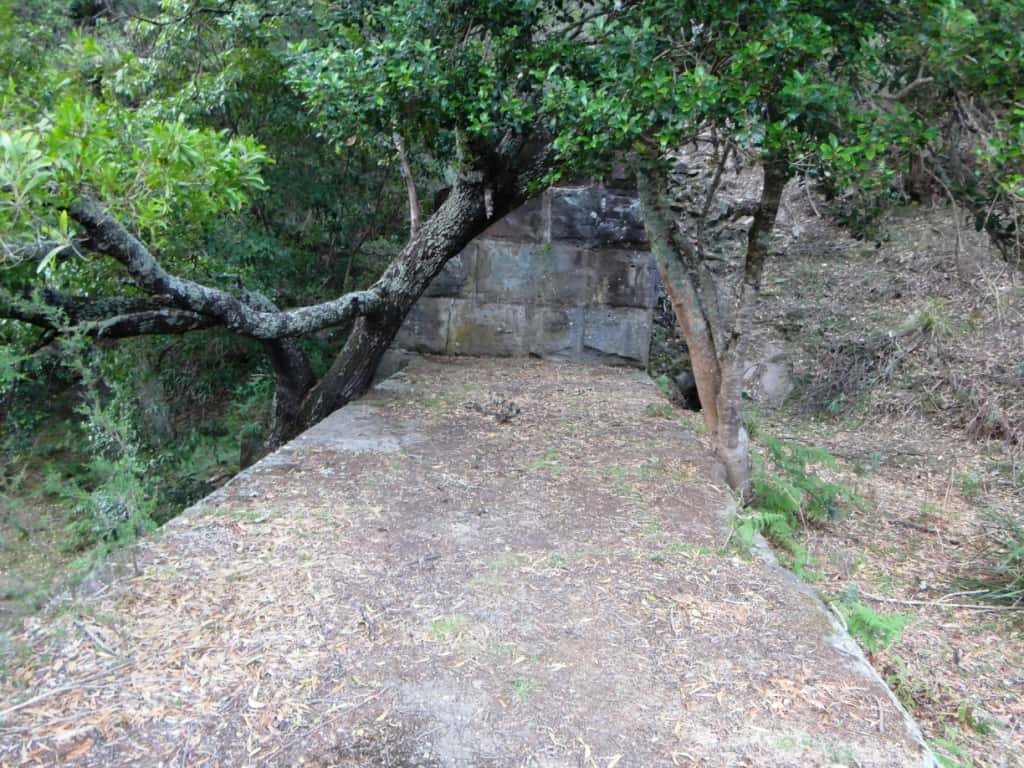
(Or this I recently encountered on the Mitchell River)
All the CO2 folks have produced over the last thirty years or so has created forests greater than two Australia’s somewhere. The area of wilderness is growing and growing. It will not be harmed overmuch if you should stoop to pick the odd wild daisy for your coat lapel – for your sweetheart! Neither will the world end if you should feed the ducks!
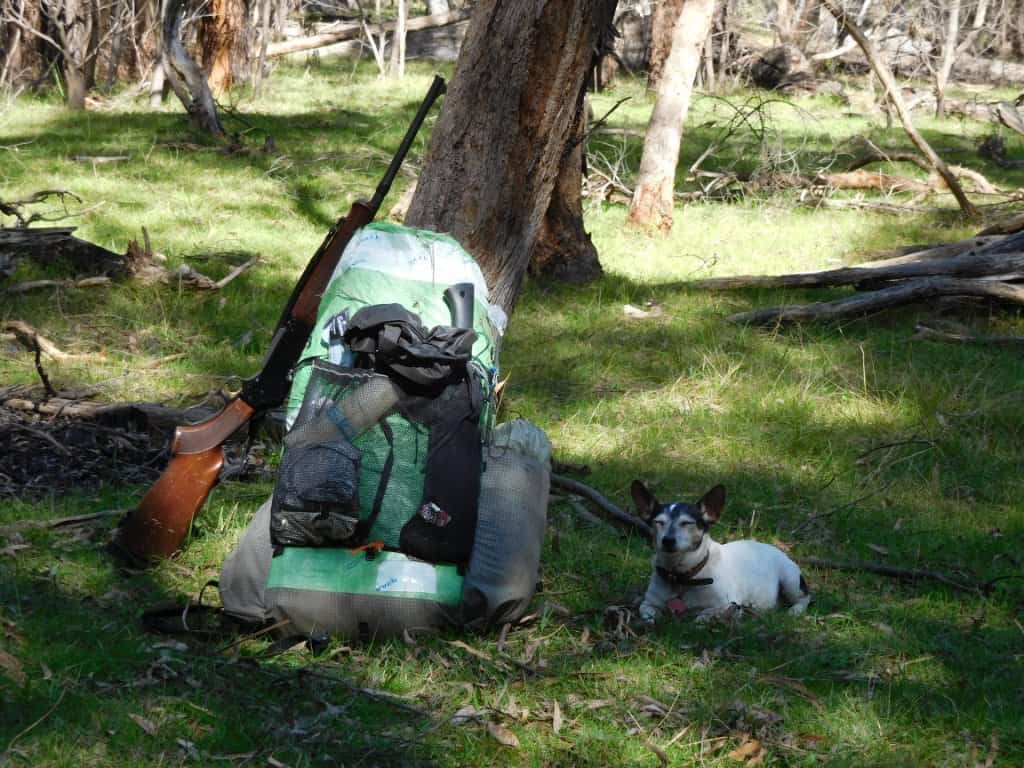
As we move further out from suburbia we begin to interact more and more with the natural world. Our farms and roadsides teem with wildlife which farmers are careful to nurture and encourage by building dams, shelter-belts and providing nest boxes for wildlife to live and breed in, for example. You can observe some of our own modest efforts here. If all we did was ‘leave no trace’ we would do nothing.
Then there are the hordes of people who spend their leisure time in one way or another caring for the land. The duck hunters who acquire, create and re-vegetate swamps and fill them with nesting opportunities, for example, the thousands of fox hunters who spend every winter weekend out in the cold and rain attempting to reduce or eliminate the plague of these terrible destroyers of wildlife, and so on.

Above in the green tubes are some of the thousand trees we have planted recently)
Most people venture out from suburbia every now and then to vehicular campsites, caravan parks, beaches etc where they interact with nature in various ways. It is common for them to pick wildflowers, or take a feather or pretty stone or piece of driftwood home with them. The kids build sandcastles, or gather sticks and driftwood and make cubbies. Everyone takes a few seashells, an interesting skull or a few pretty stones home. The children may dig pools in a stream or heap stones to dam it. Everyone plays at skipping stones (how wicked!) Building rock cairns and stone sculptures is also a popular, harmless pastime. Various objects find their way into babbling streams to see how fast they will race. Many are lost forever. Most people like to gather wood and have a campfire; they may even burn some rubbish in the fire – and may even feed the ducks! All this outrageous everyday behaviour is anathema to the ‘leave no trace’ brigade. How silly and authoritarian they are!
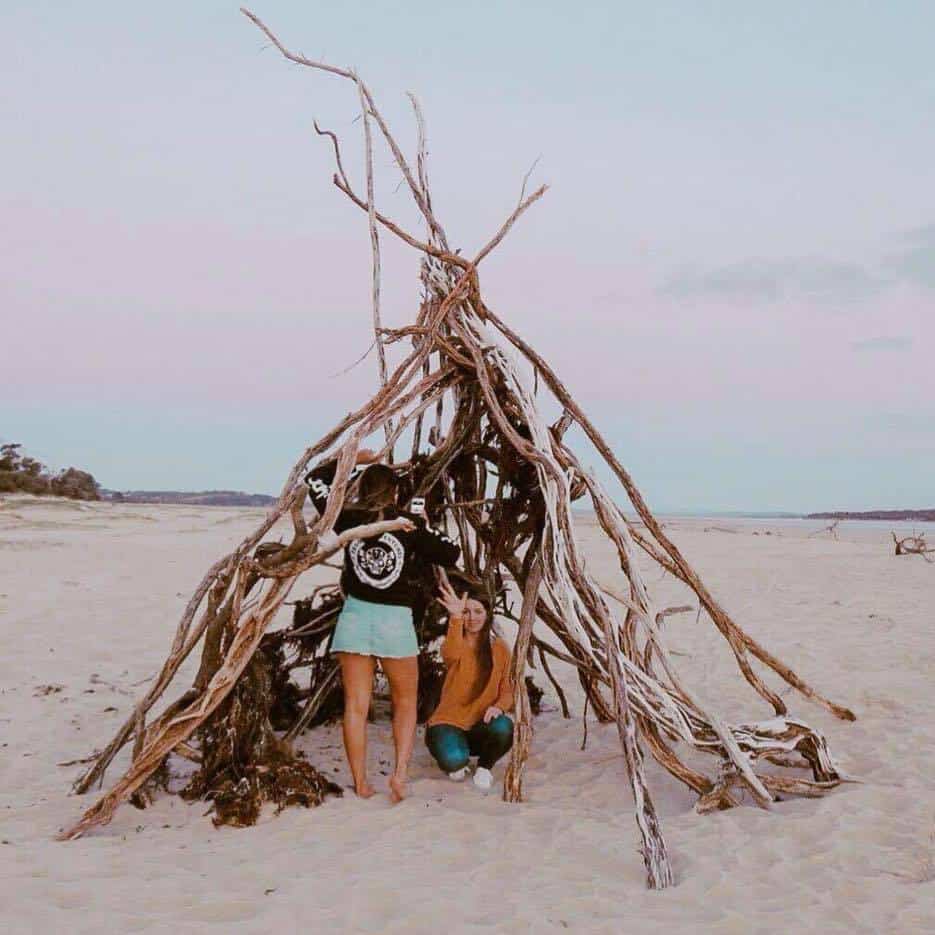
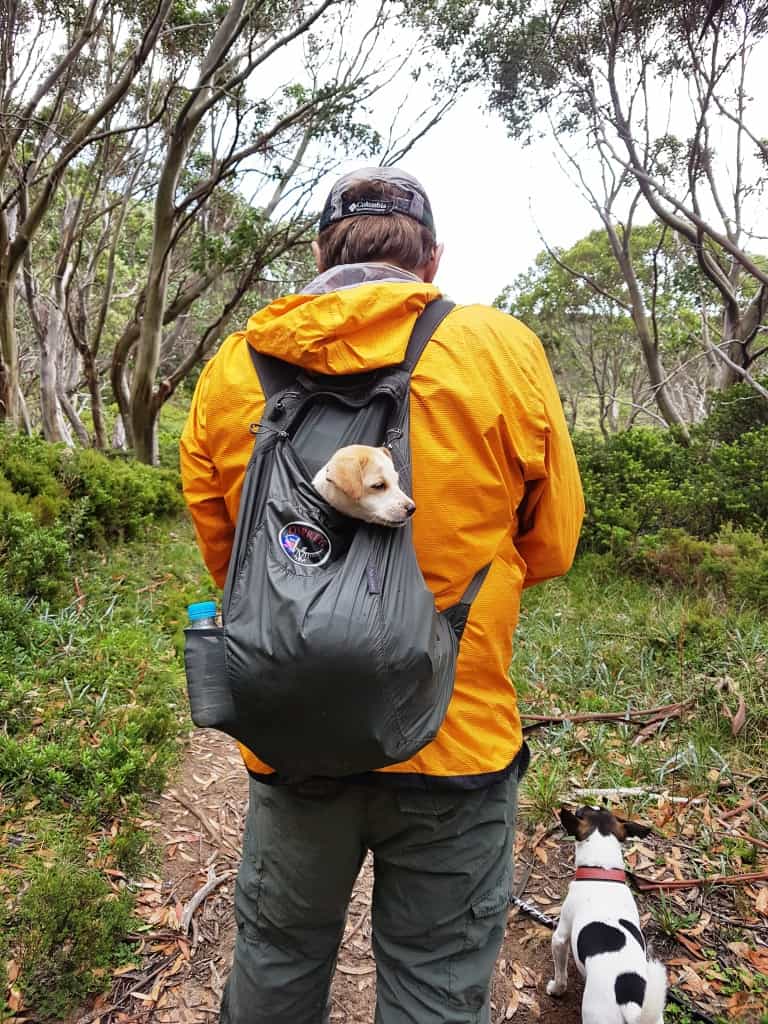
There are vast areas of wilderness where no-one is ever likely to live – but which one might visit. Here in the East of Victoria there are literally millions of wild acres – and ever will be. These Gippsland mountains have been my playground now for most of my life – though I came here from elsewhere long ago – from forests, rivers and deserts which now in my old age have become strangers to me. I have wandered the hills and valleys of Gippsland with one excuse or another now for over 40 years – and hope to do so for long yet – though I am in my seventieth year, so it might not be that long. There are many vistas still these old eyes have not peered into. Mostly I have roamed the trackless wilderness, but in doing so I have ever made my own ‘tracks’.
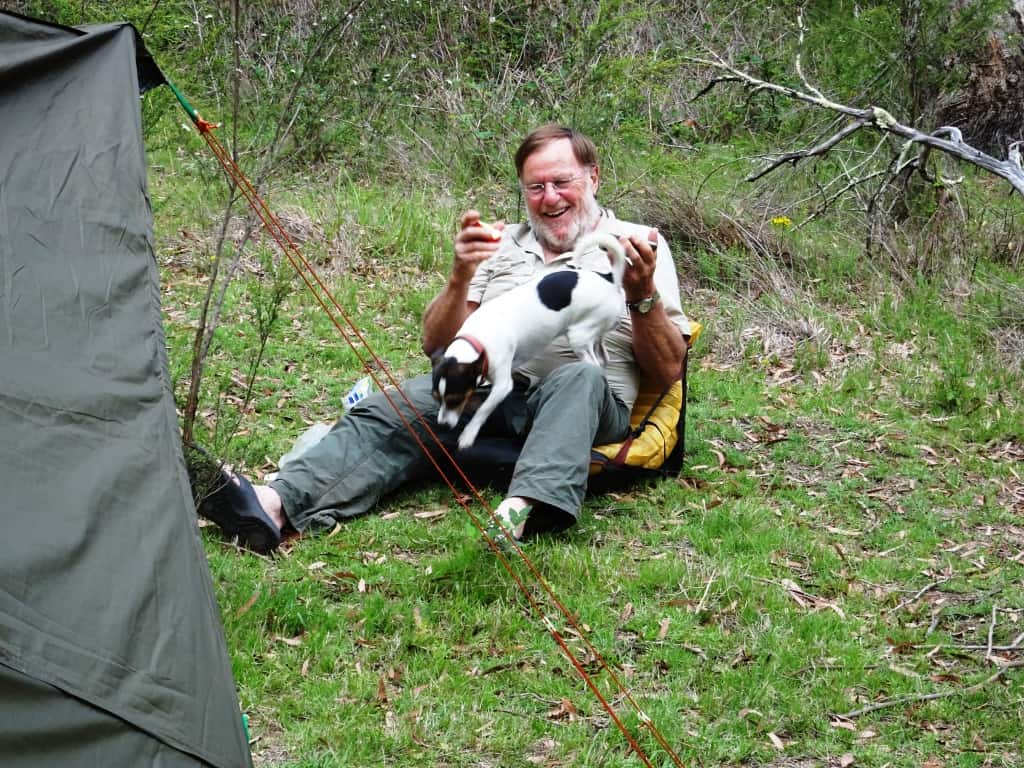
If I failed to return for only a little while (a couple of years is enough) my ‘track’ would be gone – and I would have to make a new one. I am speaking here only of opening up an existing ‘game trail’ so a person may walk without stooping overmuch. Sometimes others followed my ‘tracks’ and also enjoyed the camping spots I found and ‘improved’. Most folk are too blind to ever notice such ‘game trails’ at all. To make such trails and camps is a ‘public service’ and many more should do so, far from ‘leaving no trace’.

I would see a path leading down every ridge and up every valley, and a soft, pleasant camp on every cool, shady level spot. There are scarcely enough people in the whole world to simultaneously occupy every such path and spot as exist just here in the East of Victoria. Certainly there are not so many folk in Australia or in Victoria, or ever will be – or even many who would want to do so. Therefore largely every such route and pleasant bower will ever be deserted. When you venture thence you will have it to yourself as if it was ‘the first morning of creation’. What wilderness experience is all about! It will not be ill if folk do this everywhere there is a wild place.
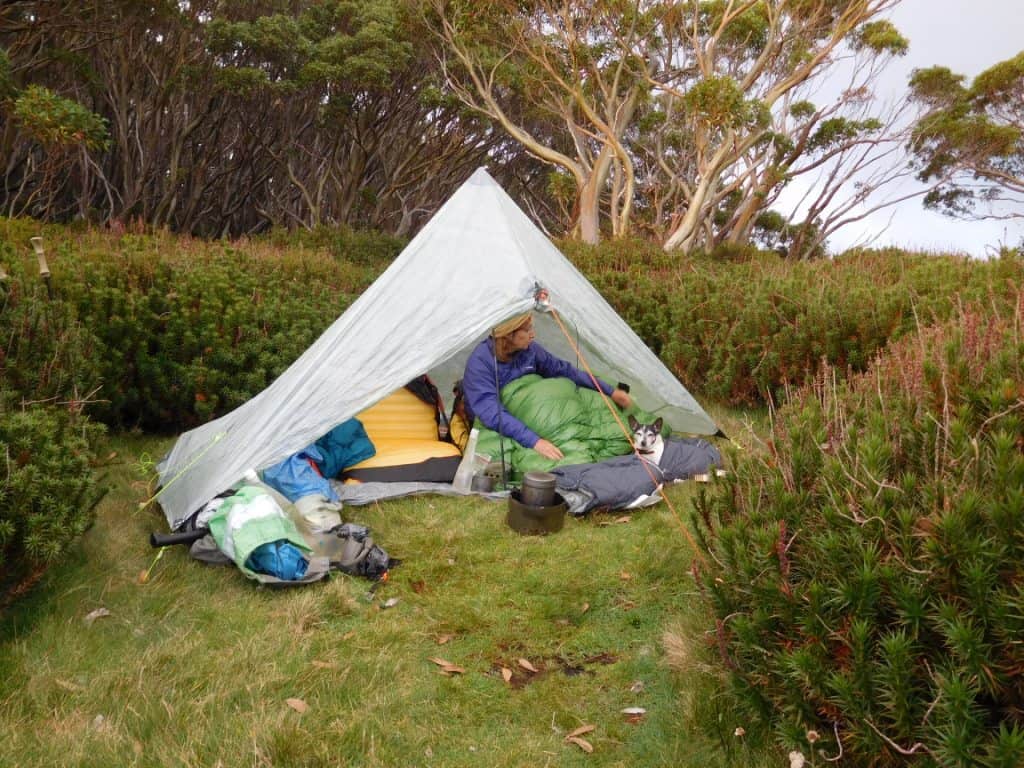
I am talking here about breaking off the odd bough or sapling – with your hands is enough, so that a single person can freely pass, bending this way and that between the trees. I do not mean ploughing vast tracks under the treads of countless dozers. Where a level camp can be made beside a cool stream, it is enough to cut a half dozen saplings at most so a small pup tent can shelter one from a mountain storm. It would overgrow in a couple of seasons at most if left unused, or make a tiny clearing where wildlife might lie in the sun on a cool afternoon or nibble a sweet shoot or two. I am talking about removing a few twigs in a whole forest. Scarce anyone would notice my passing. The ‘butterfly effect’ is not reality. A broken twig does not shake the forest.
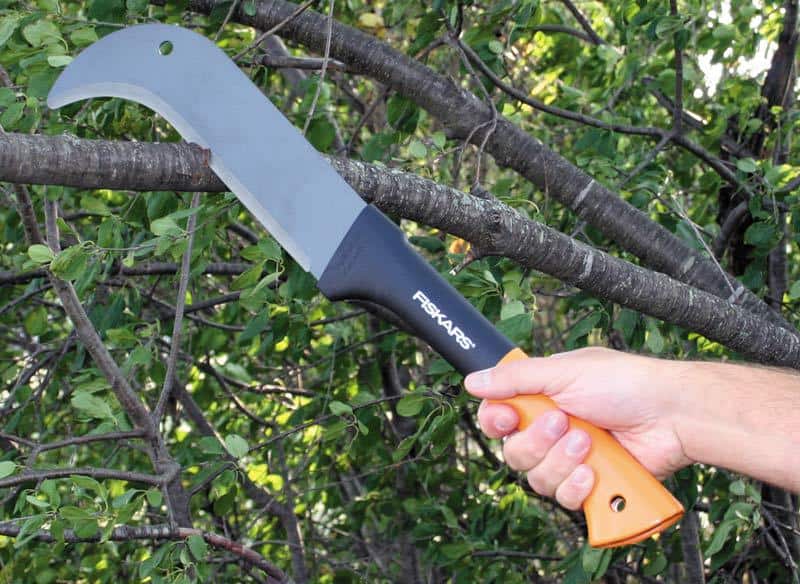
Mostly I carry a machete and a pruning saw to help me in this work. The two that I recommend here and here are mighty tools – plus light and inexpensive. Hand tools are best for this type of work so folks don’t become too enthusiastic! The tracks my Gerber machete has cleared though are very long – hundreds of kilometers are down to me. You might have encountered some over the years. I know I have encountered ones that others have cleared and breathed a word of thanks that they had so thoughtfully eased my way. Or enjoyed a night in a camp they made – and replaced what firewood I used in a pile leaned against a log to keep it dry – as you should.
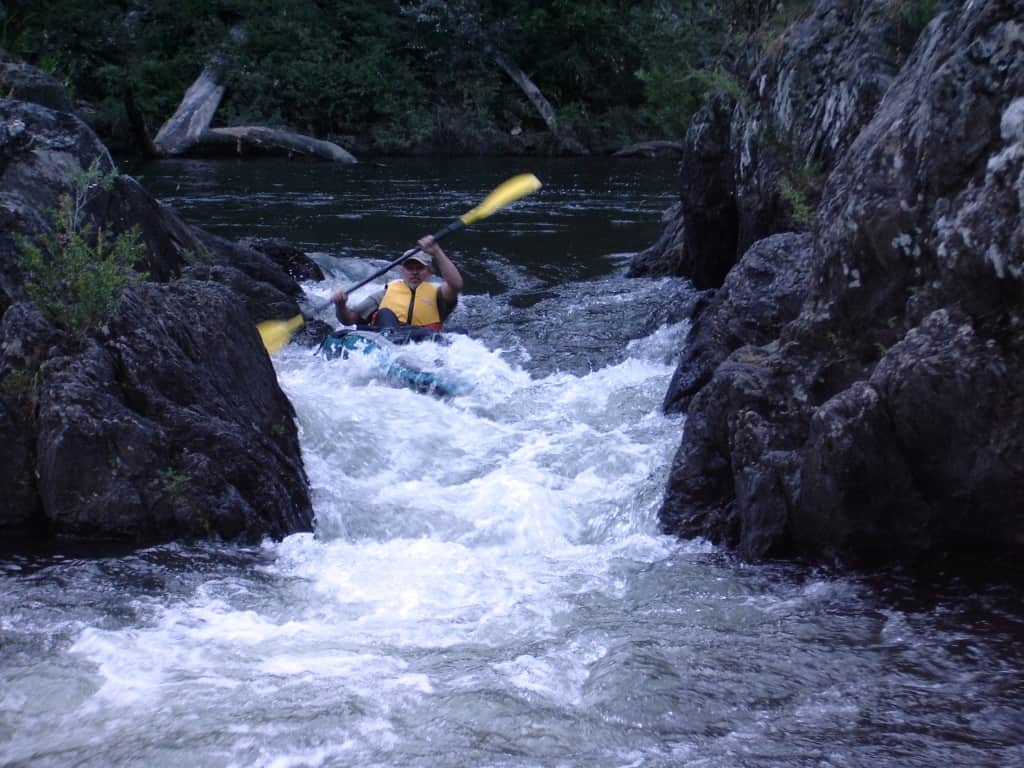
As I canoe our rivers as I often do in summer , I stop to clear a path where there is an obstruction in the river, or sometime a side path where you can portage around a dangerous rapid. If there is an overhanging branch which would have you out on a fast inside bend (or possibly cause a drowning) I take it out. As I often camp overnight, naturally I chose a level spot which is already clear, but if it needs a nip here or there so you can put up a small tent and sit on a chair or hiking mat in the cool shade of a hot summer’s day – off it goes. These prunings will only be someone else’s campfire after all. I have cleared many rivers like this over the years. Of course it is only ‘stream improvement’. The work needs to be done again and again. I encourage others to take up where I left off. I also move a few stones betimes to make a rapid or a pebble race easier or safer to navigate. Sometimes, because things weigh less under water, the rocks I have moved are larger than myself – it is no wonder perhaps I have this back trouble which keeps me restively home of late. I love it when I come to a deep pool where someone has thoughtfully climbed a huge tree to tie a stout rope for swinging and perhaps cut some steps to aid your ascent. Or where people have thoughtfully cleared a path and/or cut steps down from some beautiful campsite amongst glorious shade trees.
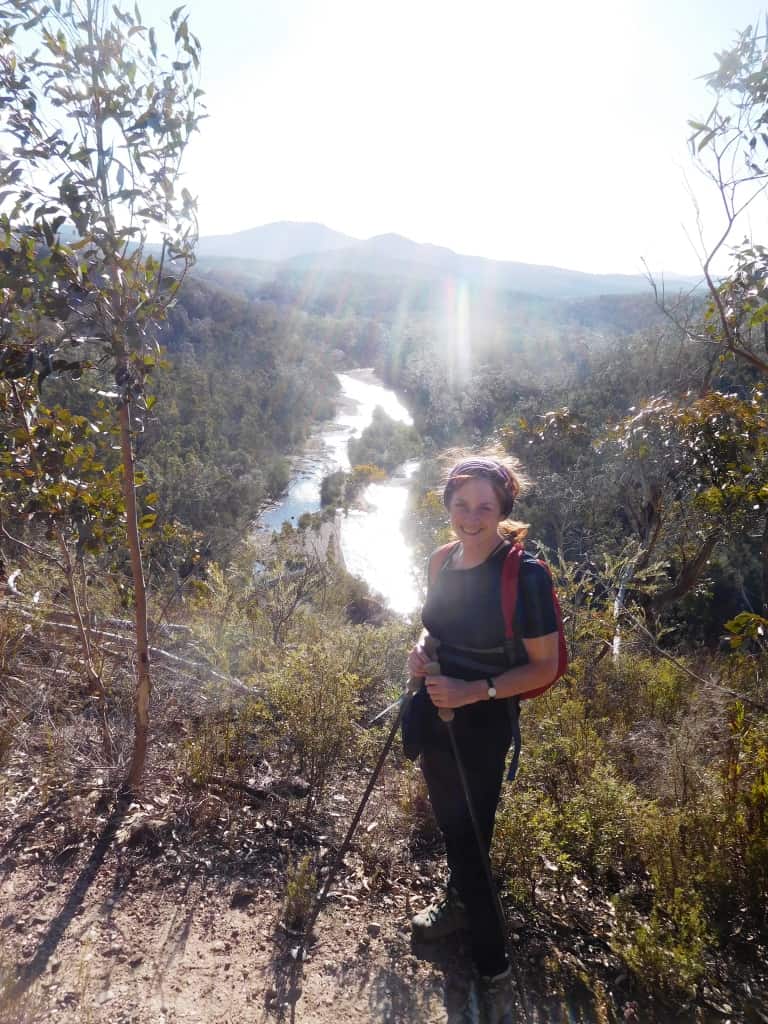
Many remote waterfalls are marked on topographical maps, yet few have walking tracks to handy viewing spots so you can visit them. Such falls are surely a delight to all. Surely too it is a public duty to carefully make such a path, and create steps too to get folks down to lovely swimming pools or fishing holes? So too places with delightful views perhaps of yawning precipices or vast horizons. These wonders are being ‘saved for future generations’ but it would be bizarre indeed if the current one could not enjoy them too! I am certainly not going to be held back from doing so by some silly current law or absurd quasi religious belief! My handy machete will continue to go snicker-snack for many years yet, and open them up to searching eyes that yearn for wide vistas.
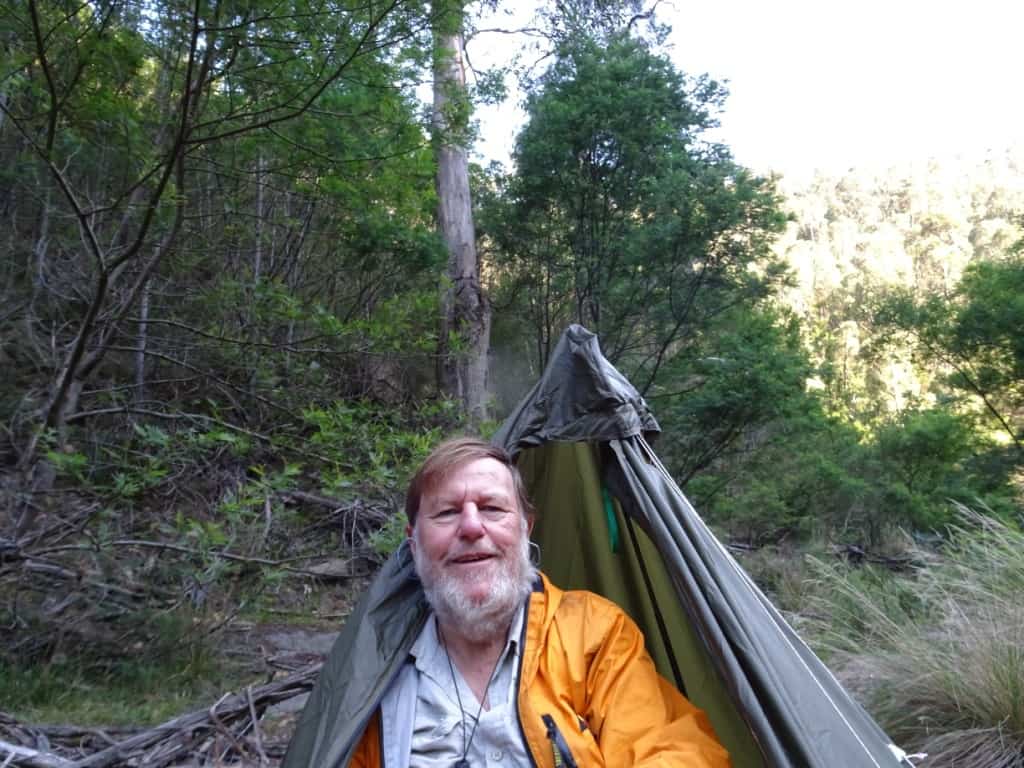
Oh, and mostly I take a dog or two with me wherever I go, whether they are allowed or not. I will pay their fine if I have to, as their price of admission. They pay their taxes too (on dog feed, collars, flea medicine etc), so they deserve to see all these wonders the Government (?) provides which otherwise would only be seen by their descendants whom the areas are being ‘saved for’. They enjoy!

A reader wrote me this letter – which provoked this post. He is obviously young and has been indoctrinated all his life – but he also needs to learn there are other ways of thinking, which are really not downright wickedness! I was hard on him I guess, but you must remember I came up through the ‘school of hard knocks’ not the cosseted insulated namby-pamby nonsense that has been the lot of young people today. I am used to ‘calling a spade a bloody shovel’ as my mother used to say. When I was 15 I had finished with school and was working 7 day roster shift work in a heavy metal refinery at the same time paying my own way full-time through a university course. I have ever stood on my own two feet and shifted for myself — and my family, taking nothing from my neighbour, or the government.

‘Hi Steve,
My name is ——, and I am working on my final project for my Outdoor Environment and Sustainability Education degree. The goal of my project is to encourage outdoor activity and spread awareness for reducing the environmental impact while outdoors.
As an avid camper, I’ve chosen this comprehensive guide “The Big Green Guide to Responsible Camping” as the focus for my assignment:
https://www.vouchercloud.com/resources/big-green-camping-guide
I thought that it might be a helpful resource for your site and visitors.
Thank you so much for taking the time to read this.
I look forward to hearing your thoughts.’

I replied: Hi ——,
Thank you for your input. Unfortunately the bits I agree with are time honoured truths; while the green religo bits are anathema to me, as I happen to think Greens are the most evil people on the planet – rather worse than the Nazis and Communists even – as they want to kill at least a third of the world’s people, probably more: they would take out 25% just if ‘organic farming’ was implemented everywhere, for example. I would not buy Patagonia just because it chooses to make its stuff out of ‘organic’ cotton which uses 27% more land, for example – and they would ban my sheep. Nothing could be more environmentally destructive!
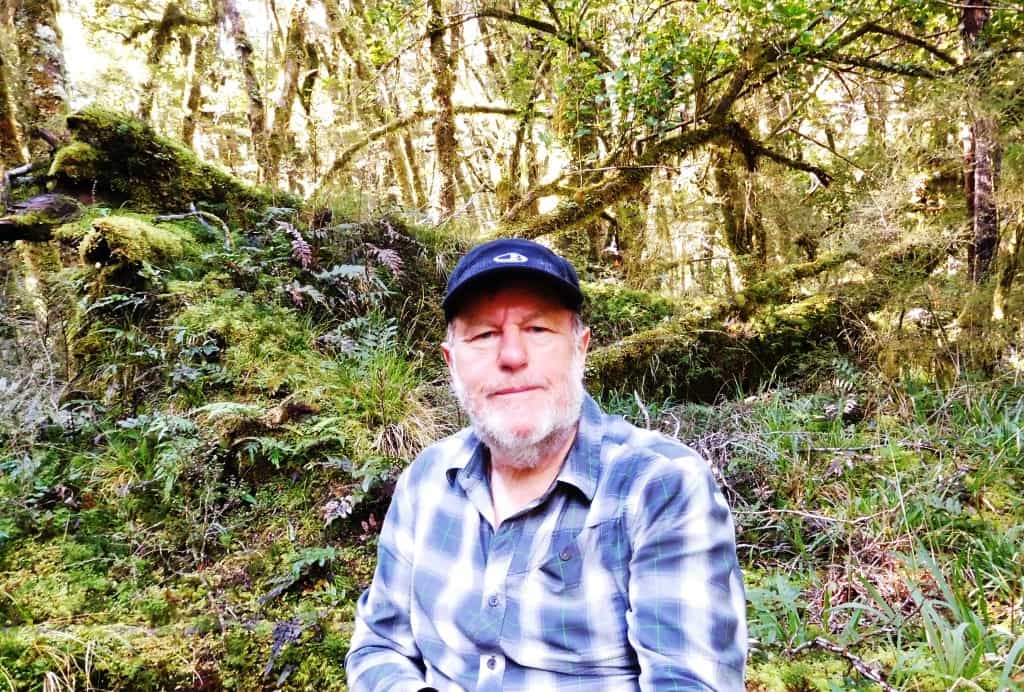
I am saddened that you are wasting your life studying for such a degree when you could be doing science, engineering or business all of which have a far better chance of improving both the human and natural environment (and have) than silly retrograde and ‘distributionist’ notions. I hope it is not too late for you to change courses. You should not spend your life ‘preaching’ such evil nonsense!
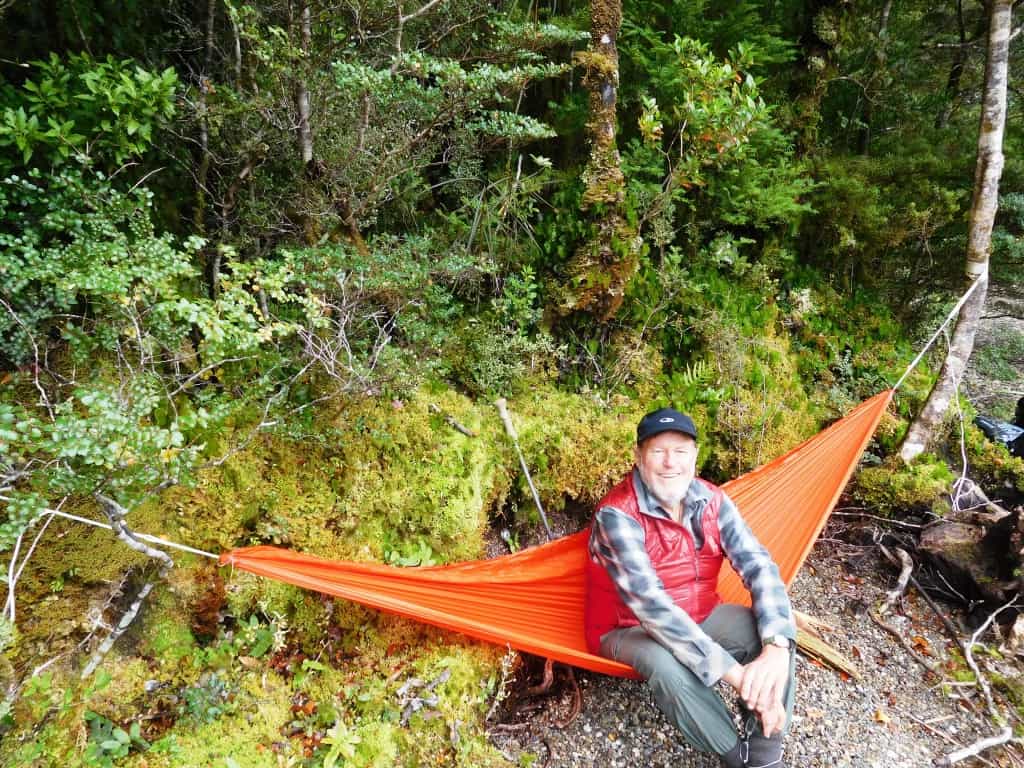
I am an ‘avid camper’ myself though I almost never do most of the things in the guide. For example, I almost never walk on paths or camp where others have camped. I own this might be harder in the UK which has a plague of people (We have been given a free return ticket there, but I doubt I will ever go; just too many people) – nonetheless world-wide the area of wilderness has expanded by 20%+ over the last quarter century because of the success of Western farming methods freeing up so much land, so there really are increasingly more places to go.

Also, I almost always have a fire (I never camp in summer) and I have observed that it is better for the environment if you have fires on fresh spots each time, as this maximises interesting regrowth. I often clear a path for others to follow (I admit this is largely because my wife is partially sighted) and I think this is a good thing to do, as it is better entirely if people are more spread out, rather than localised in formal camping spots.
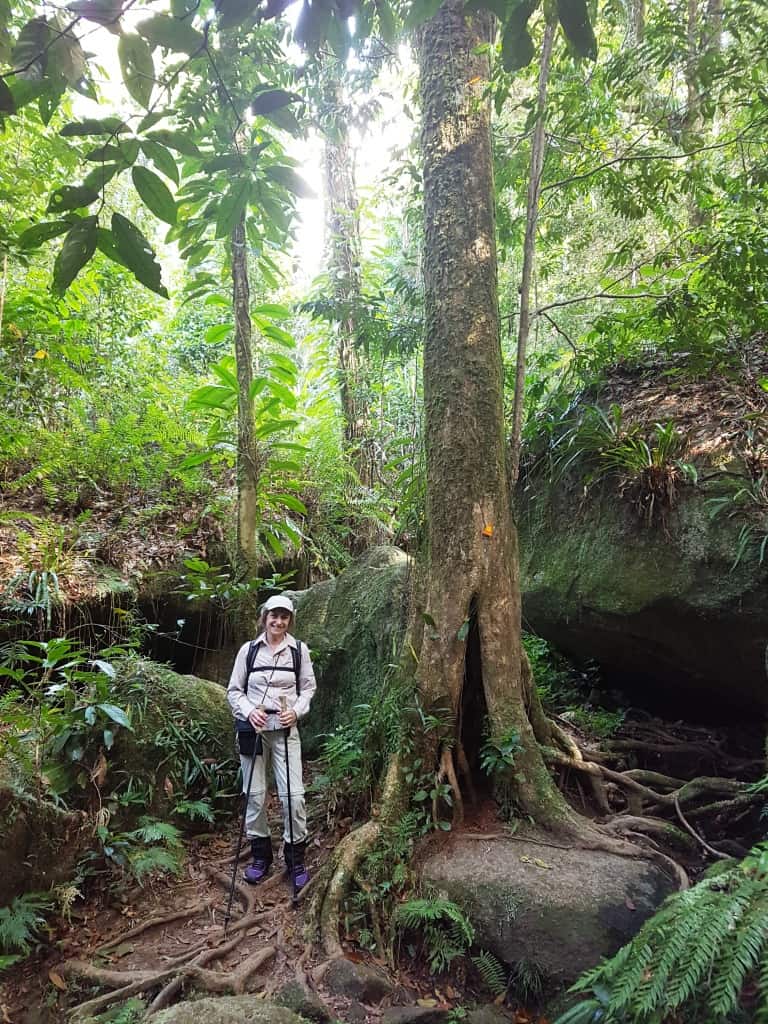
I notice the guide omitted the idea of making your own camping gear (which is what I usually do). Surely this is much ‘greener’ than nearly all the other options? It doesn’t seem to encourage hunting either (which I have always done). Surely hunting is much ‘greener’ than consumerism. I also always make, rather than buy my own meals. Why not try the Nepali Dahl meal I just posted about?
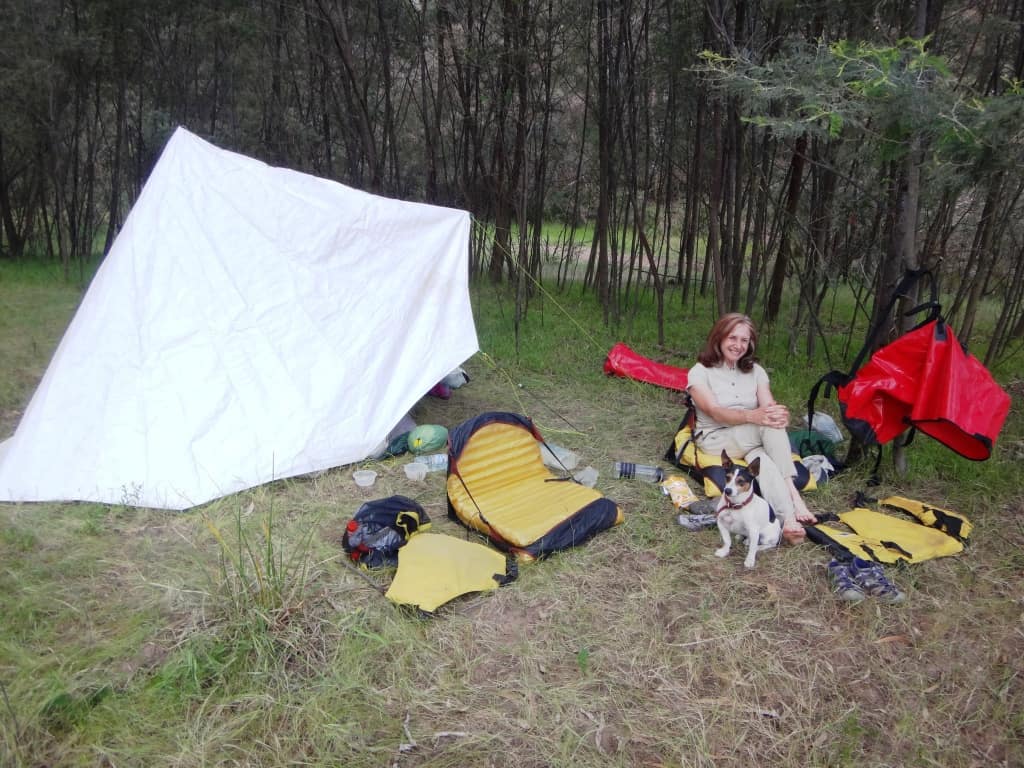
I know you will probably find the above awfully rude. I just hope that it is not too late for you to change your very wrong thinking. We were all young once, and if when we were impressionable we came under the evil influence of bad ‘teachers’ we might all have gone where you seem to be headed. However, I have known many who were able to see through the fog of propaganda they have been served, and who have mended their ways entirely. I hope you become one such.
Good Luck, Steve Jones.
He never replied. There is always still time. At least I tried!

PS: Just a sprinkling of our photos to illustrate what otherwise might be too much writing in one hit. Hope you enjoy. Cheers, Steve.
PS2: I see no reason why folks who chose to live in the wilderness far from any track or road should be prevented from doing so…Watch these films: https://en.wikipedia.org/wiki/Leave_No_Trace_(film) & http://www.theultralighthiker.com/dick-proenneke-alone-in-the-wilderness/
CO2 is greening the earth. Two new areas the size of Australia of forest cover added.
Australia has been able to meet all its Kyoto CO2 mitigatiion targets since 1990 by the increase in tree area alone alone! I daresay America too would go close to that – as would the rest of the world.
This great greening news even comes from NASA which usually warns about its ill effects. See: https://www.nasa.gov/feature/goddard/2016/carbon-dioxide-fertilization-greening-earth
& http://www.thegwpf.com/matt-ridley-global-warming-versus-global-greening/

